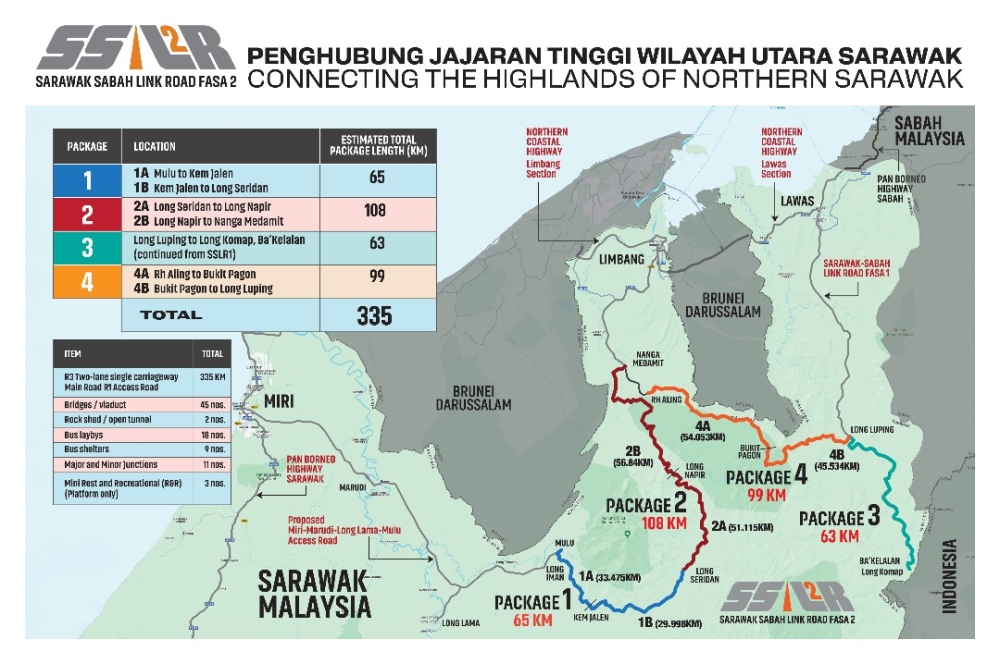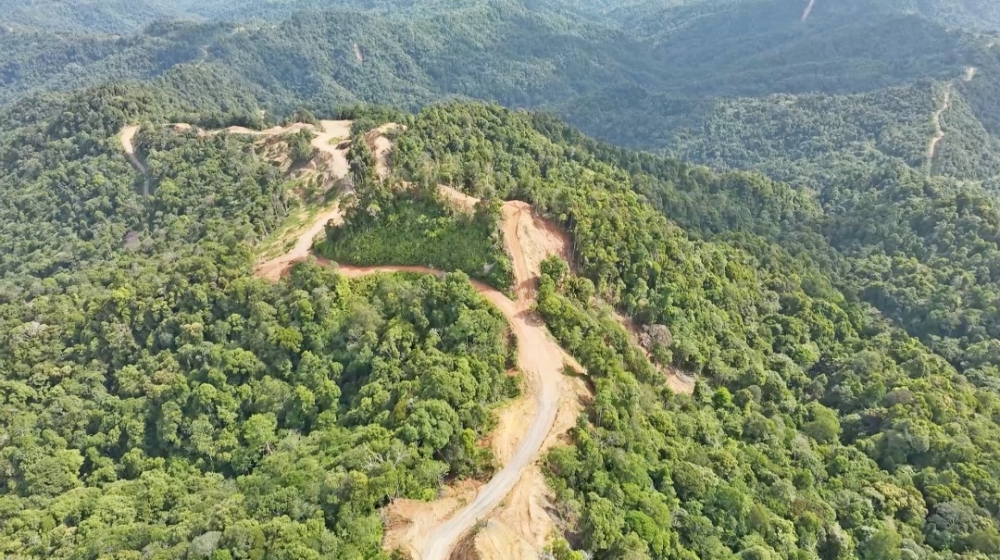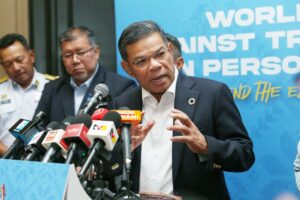KUALA LUMPUR, Sept 12 — In a bold move to enhance regional connectivity and stimulate socioeconomic growth in East Malaysia, the Federal Government has embarked on a game-changing infrastructure project, the Sarawak–Sabah Link Road (SSLR).
Spanning across the states of Sarawak and Sabah, this ambitious initiative is set to redefine accessibility, safety, and economic integration in the heart of Borneo.
The project, divided into two major phases, SSLR1 and SSLR2. The SSLR represents a long-term strategic effort under the Madani government framework to bring equitable development to the rural interiors of East Malaysia, where accessibility has long been a challenge.
Historically, travel between certain parts of Sarawak and Sabah required crossing international borders, causing logistical and administrative complications for locals and businesses alike.
The SSLR project aims to eliminate this obstacle by providing a direct land connection between the two states.
The route will eventually link Lawas to Limbang and further to Mulu, creating a continuous and secure travel corridor deep within the Bornean interior.
This initiative is crucial in bridging the mobility gap that has hindered the development of many rural communities.
By improving access, the SSLR is poised to narrow the socioeconomic divide between coastal cities and remote inland areas with hopes of promoting inclusive development and national cohesion.
The investment for the SSLR project is fully funded by the Federal Government. Phase 1 (SSLR1) accounts for RM1.02 billion, while the larger and more complex Phase 2 (SSLR2) will cost RM7.6 billion.

The Sarawak–Sabah Link Road (SSLR) will span across Sarawak and Sabah and is set to redefine accessibility, safety, and economic integration in the heart of Borneo. — The Borneo Post pic
The implementation of both phases has been entrusted to JKR Sarawak (Public Works Department of Sarawak), ensuring a locally grounded approach to execution and community engagement.
Phase 1 covers the 75.625 km stretch from Lawas to Long Lopeng Junction, built to JKR R3 standard which is suitable for safe and efficient rural travel. This phase is not just about laying roads; it includes the construction of new bridges and viaducts, road lighting, drainage systems and robust environmental management, including Environmental Impact Assessments (EIA) and Environmental Protection Works (EPW).
With this groundwork in place, SSLR1 paves the way for seamless mobility within Sarawak, setting the tone for more comprehensive development in Phase 2.
SSLR2 is the more extensive phase, involving the construction of over 335 km of new roads that traverse the Sarawak-Sabah border.
Divided into four main packages, this phase will include more than 30 bridges and viaducts, tackling some of the most rugged terrains in Borneo.
Implemented via a design-and-build model, SSLR2 reflects the government’s commitment to efficiency, innovation, and quality. The target completion date is June 2029, with a projected timeline of five years.
Upon completion, this route will be a lifeline for personal travel, the flow of goods, emergency services and economic exchange between the two states.
Under the banner of the Madani government, the SSLR project is a vivid illustration of people-first governance. It’s not merely about building roads but about creating pathways to opportunity, improving quality of life, and enabling equitable growth.
By working hand-in-hand with state governments and local stakeholders, the Federal government ensures that development is collaborative, sustainable and aligned with the real needs of the people.
The Sarawak–Sabah Link Road is more than just a stretch of asphalt through the jungle. It is a symbol of progress, unity, and national willpower.
It promises to transform isolated communities into thriving hubs, reduce travel times, increase regional trade, and bolster national integration.
As construction advances, the SSLR stands as a beacon of visionary infrastructure as a road to connection, prosperity and hope for generations to come. — The Borneo Post






